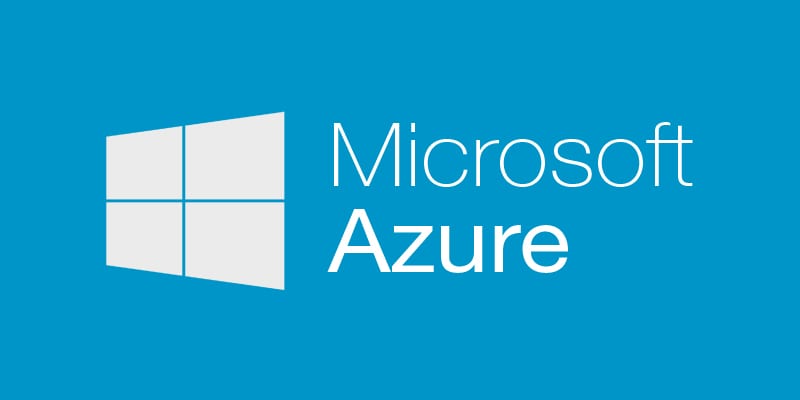Storage Accounts: 7 Ultimate Power Tips for Maximum Efficiency
Ever wondered how your favorite apps store data so seamlessly in the cloud? It all starts with Storage Accounts—your digital vault in the cloud. Let’s dive into what makes them tick and how to master them.
What Are Storage Accounts and Why They Matter

Storage Accounts are the backbone of cloud data management, especially in platforms like Microsoft Azure. They act as centralized containers for your blobs, files, queues, tables, and disks. Think of them as the foundation of your cloud infrastructure—without them, cloud computing as we know it wouldn’t function.
Definition and Core Functionality
A Storage Account is a namespace in the cloud that provides a unique address for your data. It allows you to store and retrieve vast amounts of unstructured and structured data at scale. Each account comes with a unique endpoint, such as https://mystorageaccount.blob.core.windows.net, which is used to access your data securely.
- Acts as a top-level container for data services
- Supports multiple data types: blobs, files, queues, tables, and managed disks
- Provides a single access point with shared authentication
According to Microsoft’s official documentation, every Storage Account must belong to a resource group and region, ensuring organizational clarity and geographic control.
Types of Data Supported
Storage Accounts aren’t one-size-fits-all. They support several data services, each tailored for specific use cases:
- Blob Storage: Ideal for unstructured data like images, videos, logs, and backups.
- File Shares: Cloud-based SMB/NFS file shares for lift-and-shift scenarios.
- Queue Storage: Enables asynchronous communication between application components.
- Table Storage: A NoSQL key-value store for semi-structured data.
- Disk Storage: Backs Azure Virtual Machines with persistent block storage.
“Azure Storage is designed to store massive amounts of data for applications running in the cloud or on-premises.” — Microsoft Azure Documentation
Types of Storage Accounts: Choosing the Right One
Not all Storage Accounts are created equal. Azure offers several types, each optimized for different performance, redundancy, and cost requirements. Picking the right one can save you money and boost performance.
General Purpose v2 (GPv2)
This is the most versatile and widely used type. GPv2 accounts support all Azure Storage services (blobs, files, queues, tables, and disks) and offer the lowest per-gigabyte pricing.
- Best for: Most workloads, especially those needing multiple storage services
- Features: Hierarchical Namespace (for Data Lake), Blob Lifecycle Management
- Access tiers: Hot, Cool, and Archive
Learn more about GPv2 capabilities on the Azure Blog.
Blob Storage Accounts
These are specialized for unstructured object storage. While they only support blob data, they offer advanced features like time-based retention policies and immutable storage.
- Best for: Archival, compliance, and backup scenarios
- Limited to block and append blobs
- No support for files, queues, or tables
They’re ideal when you need WORM (Write Once, Read Many) compliance, such as for financial or legal records.
Premium Storage Accounts
Designed for high-performance workloads, Premium Storage uses SSDs to deliver low-latency, high-throughput storage. These are typically used for Azure Virtual Machine disks.
- Best for: I/O-intensive applications like databases
- Access tier: Always ‘Hot’
- Higher cost but guaranteed performance
For performance benchmarks, check out Azure Disk Types.
Key Features of Modern Storage Accounts
Today’s Storage Accounts go far beyond simple data storage. They come packed with enterprise-grade features that enhance security, scalability, and automation.
Scalability and Performance
One of the biggest advantages of Storage Accounts is their near-limitless scalability. A single GPv2 account can scale up to 5 PiB (petabytes) of data.
- Handles millions of IOPS (Input/Output Operations Per Second)
- Automatic load balancing across storage nodes
- Supports high-throughput scenarios like media processing
This makes them perfect for big data, AI training, and enterprise backup solutions.
Security and Encryption
Security is baked into every layer of Storage Accounts. Data is encrypted at rest by default using Microsoft-managed keys, but you can also bring your own keys (BYOK) via Azure Key Vault.
- Encryption at rest and in transit (TLS 1.2+)
- Role-Based Access Control (RBAC) integration
- Private Endpoints to block public internet access
You can also enable Storage Account Keys rotation and use Shared Access Signatures (SAS) for time-limited access.
Data Redundancy Options
Azure offers multiple redundancy options to protect your data against hardware failure and regional outages:
- LRS (Locally Redundant Storage): Copies data 3 times within a single data center.
- GRS (Geo-Redundant Storage): Replicates data to a secondary region hundreds of miles away.
- RAGRS (Read-Access GRS): Same as GRS, but allows read access to the secondary region.
- ZRS (Zone-Redundant Storage): Replicates data across 3 availability zones in the same region.
Choosing the right redundancy depends on your disaster recovery needs and budget. GRS and RAGRS are ideal for mission-critical applications.
How to Create and Configure Storage Accounts
Setting up a Storage Account is straightforward, but making the right configuration choices upfront can prevent headaches later.
Step-by-Step Creation via Azure Portal
1. Log in to the Azure Portal.
2. Click “Create a resource” > “Storage” > “Storage account”.
3. Fill in the basics: Subscription, Resource Group, Storage Account Name (must be globally unique), Region.
4. Choose the account type (GPv2 recommended for most).
5. Select performance (Standard or Premium), redundancy, and access tier.
6. Enable features like Hierarchical Namespace if using for Data Lake.
7. Review and create.
- Name must be 3-24 characters, lowercase letters and numbers only
- Resource Group helps with cost tracking and permissions
- Region affects latency and compliance
Using Azure CLI for Automation
For DevOps and automation, use Azure CLI:
az storage account create n --name mystorageaccount n --resource-group myResourceGroup n --location eastus n --sku Standard_LRS n --kind StorageV2This script creates a GPv2 account with LRS redundancy. You can integrate this into CI/CD pipelines or Infrastructure-as-Code (IaC) tools like Terraform.
Best Practices for Configuration
Follow these best practices to optimize your setup:
- Use descriptive names (e.g.,
prod-data-storage-eastus) - Enable Secure Transfer Required (enforces HTTPS)
- Set up diagnostic logs and metrics
- Use Tags for cost allocation (e.g., Environment=Production, Department=Finance)
Proper tagging helps with billing reports and governance.
Managing Access and Security in Storage Accounts
Controlling who can access your data is critical. Storage Accounts offer multiple layers of access management.
Shared Access Signatures (SAS)
SAS tokens provide delegated access to resources without exposing account keys. You can generate SAS URLs with specific permissions (read, write, delete) and expiration times.
- Service SAS: Grants access to a specific resource (e.g., a blob container)
- Account SAS: Broader access across services and permissions
- Can be revoked by regenerating keys or setting expiry
Example: https://mystorage.blob.core.windows.net/mycontainer/myblob?sv=2020-08-04&ss=b&srt=sco&sp=r&se=2024-01-01T00:00:00Z&st=2023-12-01T00:00:00Z&spr=https&sig=...
Role-Based Access Control (RBAC)
RBAC integrates with Azure Active Directory (AAD), allowing fine-grained control over user and service principal access.
- Predefined roles: Storage Blob Data Reader, Contributor, Owner
- Custom roles can be created for specific needs
- Eliminates the need to share storage account keys
This is the recommended method for enterprise environments.
Private Endpoints and Network Rules
To block public internet access, use Private Endpoints to connect your VNet directly to the Storage Account.
- Data never traverses the public internet
- Use Network Security Groups (NSGs) to control traffic
- Enable firewall rules to allow only specific IP ranges
This is crucial for compliance with standards like HIPAA or GDPR.
Monitoring, Logging, and Optimization
Once your Storage Account is live, monitoring its performance and usage is key to maintaining efficiency and controlling costs.
Using Azure Monitor and Metrics
Azure Monitor provides real-time insights into your storage usage:
- Track metrics like Ingress/Egress, 404 Errors, Server Latency
- Set up alerts for anomalies (e.g., sudden spike in egress)
- Visualize data with dashboards
Metrics are available in the Azure Portal under the “Metrics” tab of your Storage Account.
Enabling Diagnostic Logs
Diagnostic logs capture detailed operations like read/write requests, authentication attempts, and deletions.
- Logs can be sent to Log Analytics, Storage, or Event Hubs
- Use for auditing, troubleshooting, and security analysis
- Retention policies can be set (e.g., keep logs for 365 days)
Enable them under “Diagnostic settings” in the portal.
Cost Optimization Strategies
Storage costs can spiral if not managed. Here’s how to stay lean:
- Use Cool or Archive tier for infrequently accessed data
- Enable Blob Lifecycle Management to auto-move or delete old blobs
- Monitor capacity trends to avoid over-provisioning
- Use Azure Cost Management to track spending by account
For example, moving 1 TB of data from Hot to Cool tier can reduce monthly costs by up to 60%.
Common Use Cases and Real-World Applications
Storage Accounts aren’t just theoretical—they power real-world applications across industries.
Backup and Disaster Recovery
Many organizations use Blob Storage as a backup target. Azure Backup and third-party tools like Veeam integrate directly with Storage Accounts.
- Back up VMs, databases, and on-premises servers
- Store backups in GRS-enabled accounts for geo-redundancy
- Use Immutable Blob Storage to protect against ransomware
This ensures business continuity even during regional outages.
Big Data and Analytics
With Hierarchical Namespace enabled, a Storage Account becomes an Azure Data Lake Gen2, perfect for analytics.
- Integrate with Azure Synapse, Databricks, and HDInsight
- Store petabytes of structured and unstructured data
- Supports high-concurrency queries
Companies use this for customer analytics, IoT data processing, and machine learning pipelines.
Static Website Hosting
You can host static websites (HTML, CSS, JS, images) directly from a Blob container.
- Enable Static Website feature in the portal
- Set index and error documents
- Access via
https://mystorage.z13.web.core.windows.net
Combine with Azure CDN for global low-latency delivery.
What are Storage Accounts used for?
Storage Accounts are used to store various types of data in the cloud, including blobs (images, videos), files (SMB shares), queues (messaging), tables (NoSQL), and disks (VM storage). They’re essential for cloud applications, backups, analytics, and static websites.
What’s the difference between GPv2 and Blob Storage accounts?
General Purpose v2 (GPv2) supports all storage services (blobs, files, queues, tables, disks), while Blob Storage accounts are specialized for blob data only but offer advanced features like immutable storage and retention policies.
How do I secure my Storage Account?
Use RBAC with Azure AD, enable Private Endpoints, enforce HTTPS with Secure Transfer, use SAS tokens for limited access, and configure firewall rules. Also, encrypt data with customer-managed keys in Azure Key Vault.
Can I change the redundancy of a Storage Account after creation?
Yes, you can upgrade redundancy (e.g., from LRS to GRS) after creation, but you cannot downgrade. Changes are made in the Configuration tab of the Storage Account in the Azure Portal.
How much does a Storage Account cost?
Costs depend on storage type, redundancy, access tier (Hot, Cool, Archive), and data transfer. GPv2 in Hot tier with LRS starts at around $0.018 per GB/month in most regions. Use the Azure Pricing Calculator for accurate estimates.
Storage Accounts are far more than just cloud buckets—they’re powerful, secure, and scalable systems that form the foundation of modern cloud architecture. Whether you’re hosting a website, backing up critical data, or running big data analytics, choosing the right type, configuring it securely, and optimizing for cost will ensure your data is always available, protected, and efficient. By mastering the features and best practices outlined here, you’re well on your way to becoming a cloud storage pro.
Further Reading:

